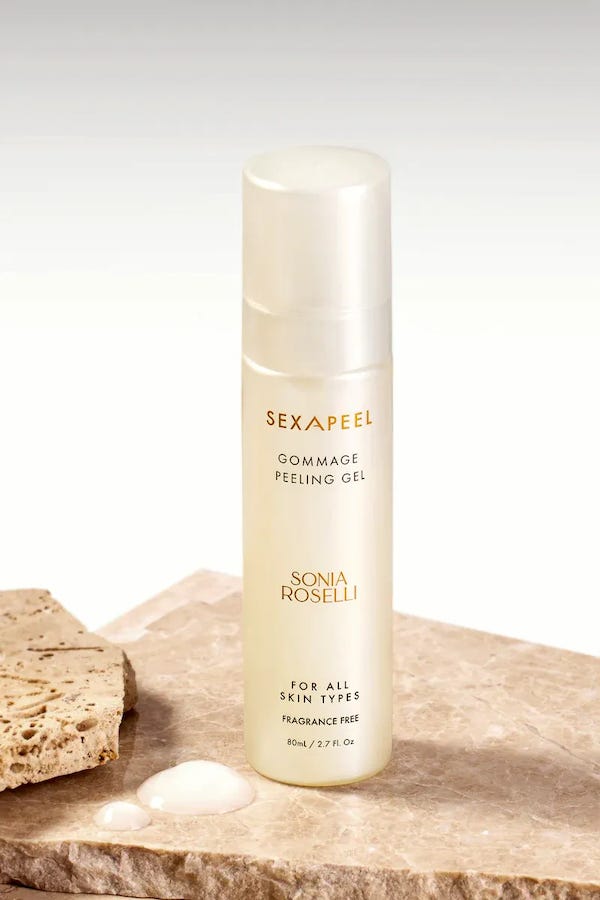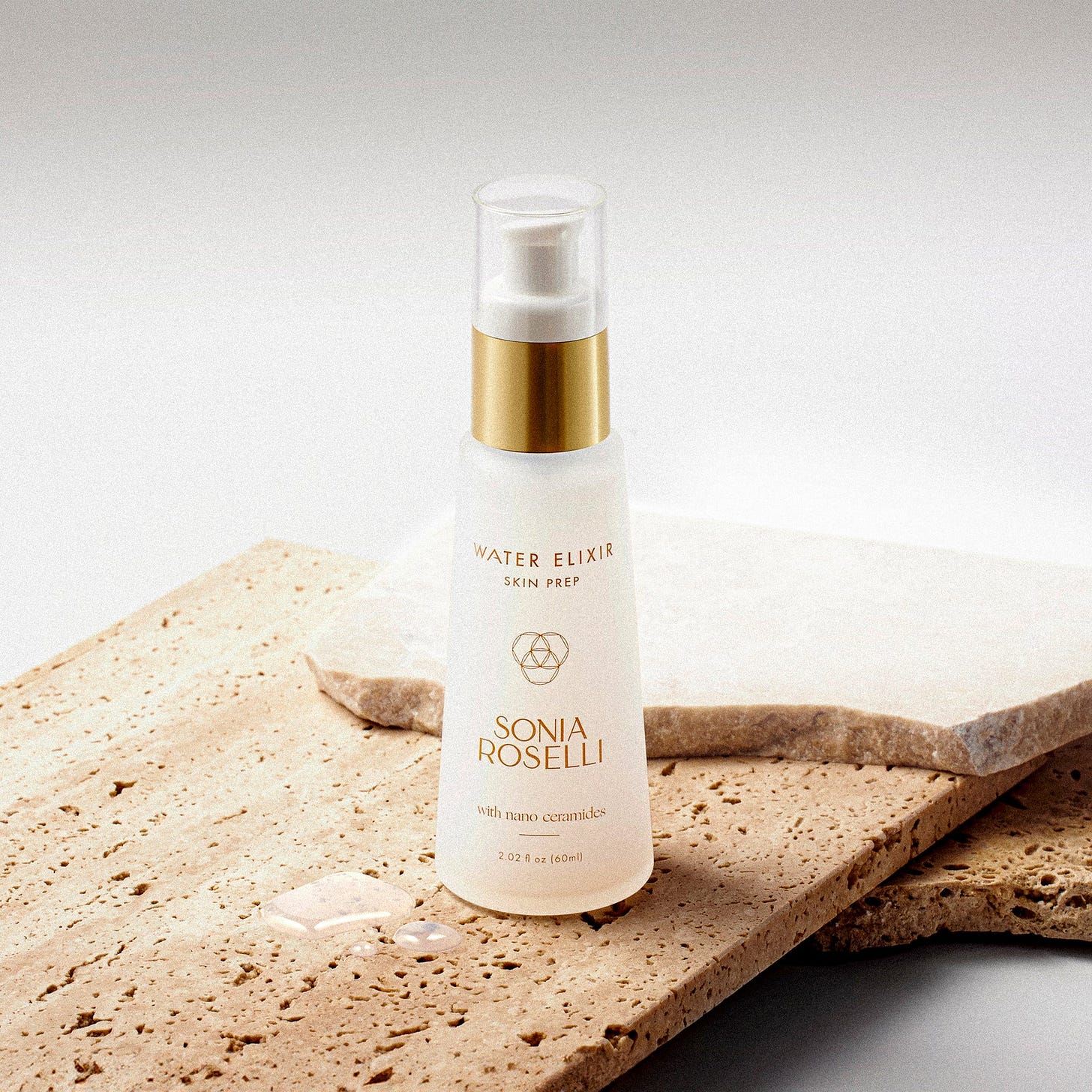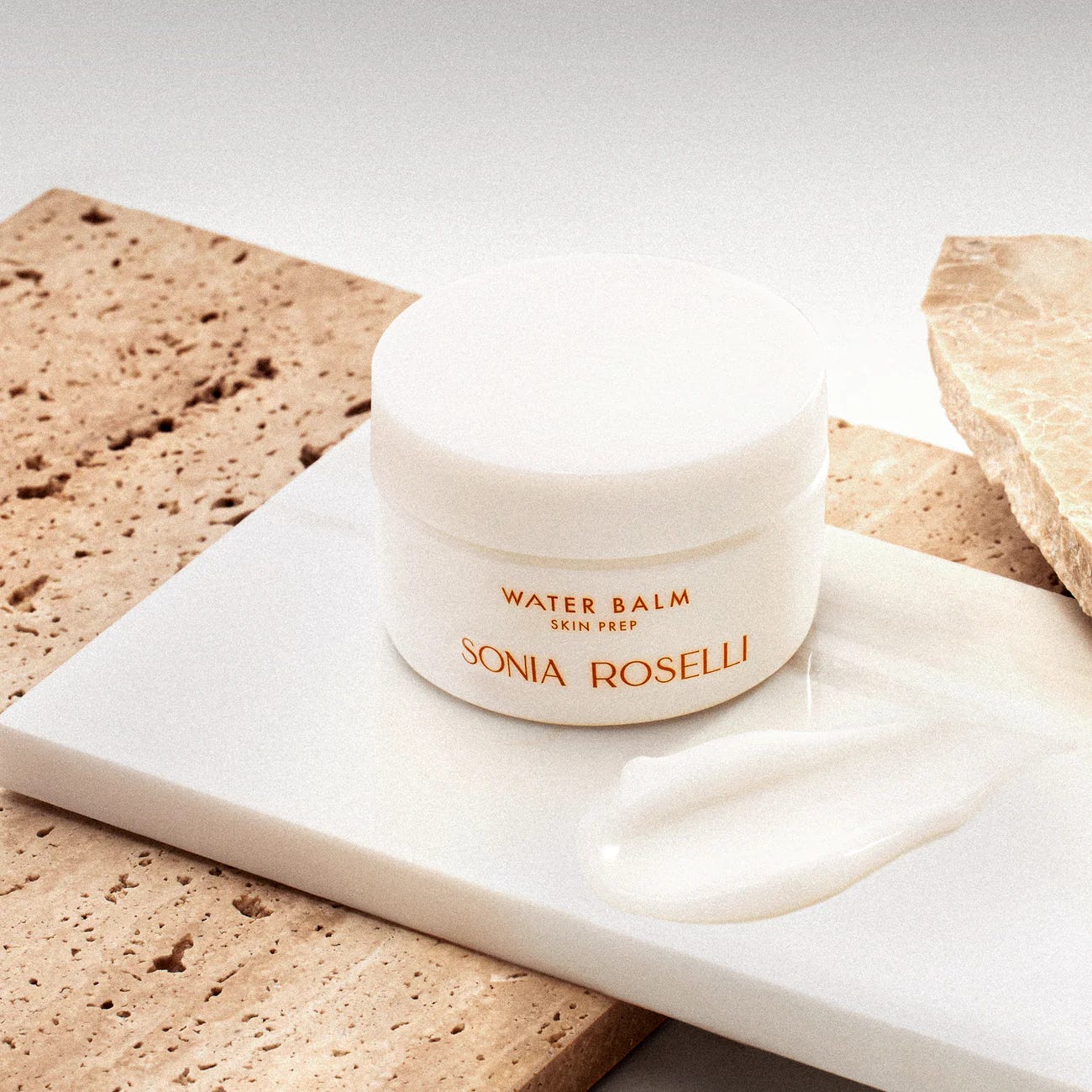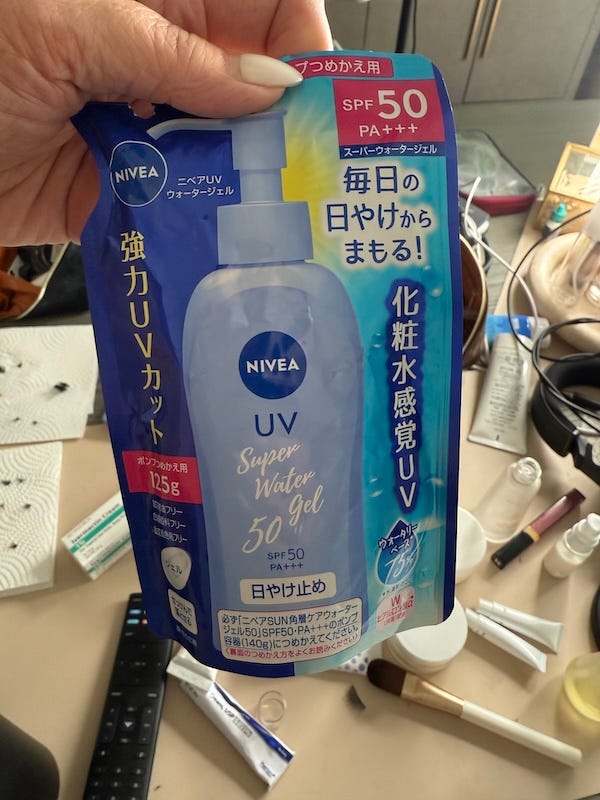As someone with 30+ years of makeup artistry experience, I've learned that the key to youthful-looking makeup isn't piling on coverage—it's choosing formulations that work with mature skin to create that coveted "your skin but better" finish.
The truth is, foundation that looks like actual skin becomes both more challenging and more important as we age.
Today, I'm going to teach you how to shop like a pro makeup artist, not just what to buy.
Understanding How Skin Changes After 40
Our skin at 40 is dramatically different from our skin at 30, and it continues changing every five years thereafter.
These changes mean:
Less collagen production
Reduced skin elasticity
Changes in skin texture
Foundation that worked in your 30s now settles into fine lines
The foundation dilemma: too much looks cakey, too little doesn't cover enough
Pro Tip:
Rethink your foundation approach every five years after 40. What worked at 45 might not work at 50.
The Professional's Foundation Secret: Perfect Skin Prep
The single most important factor in achieving skin-like foundation isn't actually the foundation itself—it's what goes underneath.
Step 1: Exfoliate Your Skin (2-3 Times Weekly)
Think of this like a painter prepping canvas.
You wouldn't paint on a rough sidewalk and expect smooth results, right? Exfoliating removes the rough top layer so foundation glides on smoothly.
Avoid over-exfoliation (especially with sensitive or rosacea-prone skin), as this can make skin reactive.
Just 2-3 times weekly is perfect for most skin types.
Sonia Roselli Sexapeel Gommage Peeling Gel is perfect for all skin types.
Step 2: Intense Hydration
Hydration is the magic ingredient for skin-like foundation—regardless of whether you're dry or oily.
Start with an essence water (like Sonia Roselli Water Elixir) that plumps fine lines and minimizes pores.
Step 3: Moisturizer & Primer
Traditional primers can be like "spackle for the skin," which works for large pores but not for a natural look.
Look for hydrating primers that:
Lock in moisture
Create a soft-focus effect
Prevent foundation from "sucking water" from your skin
Make foundation apply like "butter"
Water Balm is the perfect moisturizer that acts like a makeup primer.
Step 4: Sunscreen (For Daytime)
Choose lightweight formulations that don't feel heavy or disrupt foundation or leave a white cast on the skin.
Japanese sunscreen formulations often excel here with their water-gel textures. My favorite is the Nivea UV Super Water Gel SpF 50 PA+++. Stay tuned for my Japanese Sunscreen reviews coming up in April.
Be sure you’re subscribed to get all the juicy deets!
Pro Guide to Foundation Types for Mature Skin
Liquid Foundation
Best for: Everyday wear, professional settings, photos
Skin types: Especially good for dry/sensitive skin
What to look for: "Hydration," "dewy," "radiant" on the label
Dry Skin: Avoid "Long-wear" or "24/48-hour" formulas, they tend to be drying
For oily skin: Look for lightweight, oil-free options with satin to matte finish
Traditional Cream Foundations
Best for: Camera work, professional video, longer-lasting coverage
Skin types: Dry, dehydrated, sensitive, rosacea-prone skin
Coverage: Higher coverage than liquid, great for redness or melasma
Pro tip: Can be sheered out with facial mist for a more natural finish
Not recommended for: Oily skin (usually contains oils that may feel heavy)
Powder Foundation (Mineral Foundations)
General rule: After 40, powder foundations are typically not your friend
Exception: "Baked" or "finely-milled" powders usually are more skin like. Check out these from brands like Laura Geller or Hourglass.
Best for: Oily skin or minimal lines, not a lot of texture
What to look for: "Baked," "finely-milled," or "air-like" on labels
Pro Tip: For Powder foundation skin prep is mandatory. Just be sure skincare is completely absorbed before applying. Water Elixir is the perfect skin prep for this.
Serum Foundation
What it is: Sheer foundation with skincare benefits
Best for: Dry, dehydrated, sensitive, rosacea-prone skin
Texture: Hydrating and weightless on skin
For oily skin: May be too dewy (can set with a light powder)
Stick Foundation
Benefits: Travel-friendly, great for touch-ups, quick application
Similar to: Cream foundation but in stick form
Best for: Normal to dry skin
Not recommended for: Oily skin
Tinted Oil Foundation
Best for: Very dry, sensitive, dehydrated skin
Coverage: Minimal (need good skin to begin with)
Ideal use: Summer months when you want a sheer wash of color
Skip if: You have oily skin
Cushion Foundation
Origin: Popular in Asian beauty routines
Benefits: Quick, fresh application, hydrating
Best for: Dry, sensitive skin
Coverage trick: The pressing/stippling application method gives coverage with minimal product
Great for: Covering melasma or rosacea without a lot of texture
Tinted Sunscreens/BB/CC Creams
Versatility: Can work for all skin types
Shopping tip: Read the label carefully for specific skin recommendations
Pro Application Methods for Skin-Like Results
The Finger Method
For a natural, skin-like foundation finish, use your fingers! The warmth of your hands helps the product blend seamlessly, making it perfect when you're short on time.
While not suited for powders, this technique works wonders with liquid and cream foundations. Simply warm the product between your fingers, apply, and let it melt into your skin. With good skin prep, the results might surprise you!
Mix & Match Your Foundation for Flawless Coverage
Your skin has different needs in different areas, so why use just one foundation everywhere?
Try a matte foundation on your oily T-zone and a hydrating one on drier areas like your cheeks. Or, use a sheer foundation all over and a fuller-coverage formula only where you need it. Mixing and matching gives you the best of both worlds—custom coverage that looks natural and seamless!
Pro Tip:
Skin Prep is important. A smooth, hydrated base makes all the difference—so prep first, then mix and match for flawless, natural-looking coverage!
The Perfect Match
Your foundation should blend invisibly into your skin.
If you can see it, it's not the right shade.
Pro Tip for Flawless Photos:
Blend foundation onto your ears to match your face.
Apply a little to the backs of your hands for a seamless look.
Don’t forget your décolletage to avoid a noticeable contrast.
Make sure your face and exposed skin blend naturally in photos!
Read Labels Like a Pro: What They’re Designed to Do
Foundation labels describe what a product is intended to do, but results can vary. Use these descriptions as a guide, but always test products for yourself—your mileage may vary!
For Oily & Combination Skin
"Matte" / "Oil-Free" / "Shine Control" → Designed to reduce excess oil and shine, keeping skin looking smooth.
Example: If your T-zone gets shiny by midday, a matte foundation can help absorb oil and stay put longer.
"Long-Wear" / "Transfer-Resistant" → Meant to stay in place for hours without smudging or fading.
Example: Ideal for long workdays or outdoor events where touch-ups aren’t an option.
"Non-Comedogenic" → Formulated to avoid clogging pores, though this isn’t a regulated term.
Example: If you’re prone to breakouts, this type of foundation may be less likely to trigger acne.
For Dry & Mature Skin
"Hydrating" / "Dewy" / "Moisture-Boosting" → Aims to add glow and prevent dry patches.
Example: If foundation tends to cling to flaky areas, a hydrating formula can help smooth things out.
"Serum-Infused" / "Hyaluronic Acid" / "Skin-Conditioning" → Includes skincare ingredients to provide extra hydration or nourishment.
Example: If your skin feels tight after applying foundation, a serum-infused formula may keep it more comfortable.
"Radiance-Boosting" / "Illuminating" → Designed to reflect light for a youthful, glowing finish.
Example: If your skin looks dull or flat with matte foundations, an illuminating formula can add a soft, healthy glow.
For Sensitive & Acne-Prone Skin
"Fragrance-Free" / "Hypoallergenic" → Intended to minimize irritation for sensitive skin types.
Example: If you react to heavily scented products, choosing fragrance-free formulas can reduce the risk of irritation.
"Mineral-Based" / "Clean Beauty" → Often avoids certain chemicals and synthetic additives.
Example: If traditional foundations cause redness or breakouts, a mineral-based option may be gentler.
"Calming" / "Redness-Reducing" → Formulated with ingredients to help soothe irritation and even out skin tone.
Example: If you have rosacea or frequent redness, these formulas may help neutralize discoloration.
For Normal Skin & Everyday Wear
"Natural Finish" / "Skin-Like" → Designed to balance between matte and dewy for a natural look.
Example: If you don’t want a heavy or overly glowy look, this gives a fresh, realistic skin effect.
"Buildable Coverage" → Can be applied in light layers for sheer to full coverage.
Example: If you need different levels of coverage for different occasions, this allows for flexibility.
"Breathable" / "Weightless" → Aims to feel light on the skin, even with coverage.
Example: If you dislike the feeling of heavy foundation, a weightless formula may feel more comfortable.
For Special Occasions & Photography
"No Flashback" / "Photo-Ready" → Designed to prevent a white cast in flash photography.
Example: If you’ll be in professional photos, avoid SPF-heavy foundations that might reflect light too harshly.
"Waterproof" / "Sweat-Resistant" → Meant to hold up against sweat, humidity, and moisture.
Example: If you need your makeup to last through a summer wedding or workout, this can help prevent streaking.
"Airbrush Finish" → Intended to blur imperfections for a smooth, flawless effect.
Example: If you want a high-definition look for events, this type of formula creates a soft-focus effect on the skin.
The Bottom Line
Great foundation should make people notice your skin, not your makeup. When someone compliments your glow instead of asking what foundation you’re wearing, you’ll know you got it right.
If this helped you, share it with a friend! We rely on people like you to spread the word and help others feel confident in their own skin.


















Share this post